Know the Facts about Weather Augmented Reality
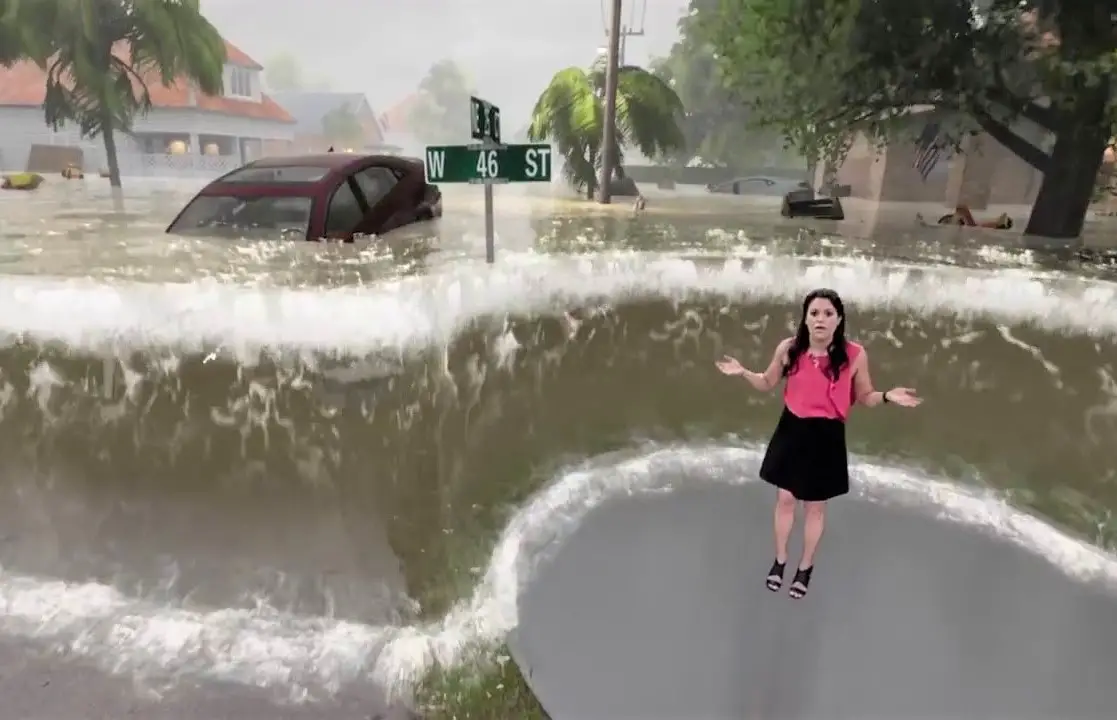
Step into the world of tomorrow with weather-augmented reality! If you’re a weather enthusiast or simply someone who loves to watch the forecast, this technology is a game-changer.
In this blog post, we’ll explore what weather augmented reality, how it works, and how you can experience it yourself. So buckle up, grab your umbrella and let’s get started!
Introduction to augmented reality weather forecasting technology
As technology advances, new opportunities arise, including weather forecasting. The development of augmented reality (AR) weather forecasting technology has revolutionised how we experience weather presentations.
ARWeather and Max Reality are just two applications that engage audiences by presenting real-time weather forecasts through AR. Shortly, weather presentations without AR may become outdated as people seek more interactive and descriptive experiences.
Additionally, integrating 3D AR models into weather training curriculums can create immersive learning experiences for student pilots. With the ability to simulate three types of precipitation – rain, snow, and hail – ARWeather acts as a real-time and spatially accurate weather simulation.
Exploring climAR and other AR weather apps can provide current weather information for users based on their location. Wearable devices like the Tinmith system and multilayer infrastructure can enhance visualising weather conditions and rough terrain on mobile AR platforms.
As AR solutions continue to develop, photo-realistic real-time 3D virtual studios and AR technology will transform how we experience weather forecasts on TV networks.
The power of Max Reality in engaging viewers for longer
Max Reality utilises advanced augmented reality technology to create dynamic, 3D images of weather events and storms that captivate viewers and keep them engaged for longer. This cutting-edge technology revolutionises weather forecasting by visualising weather data in a new way.
As viewers see weather conditions explained in augmented reality, they are more likely to commit the information to memory, making this tool incredibly effective in communicating weather-related information.
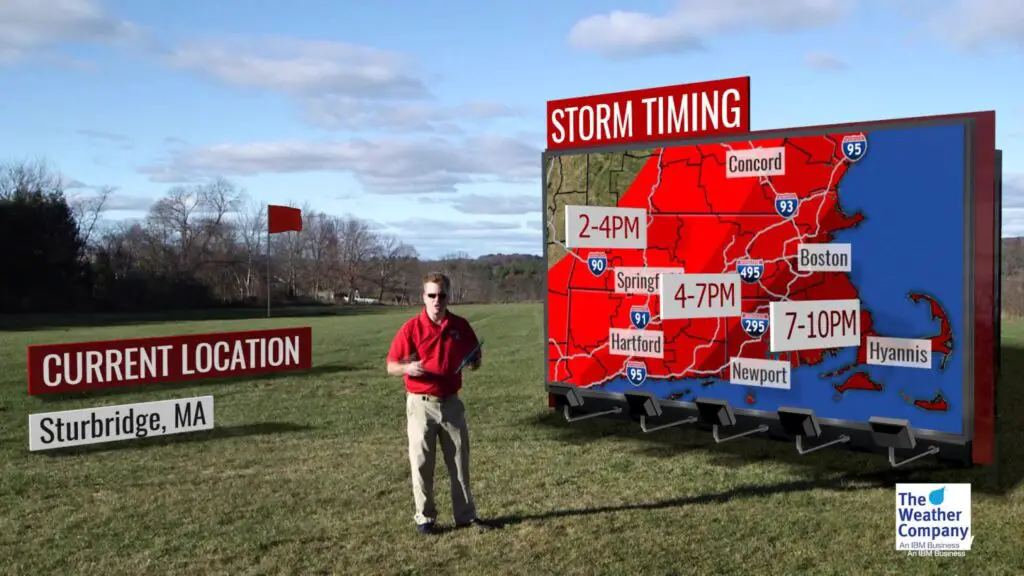
Combined with interactive and descriptive AR weather presentations, Max Reality guarantees to keep viewers engaged and up-to-date with weather forecasts. It is clear that weather presentations without AR will soon be outdated; AR technology offers viewers an entirely new level of engagement.
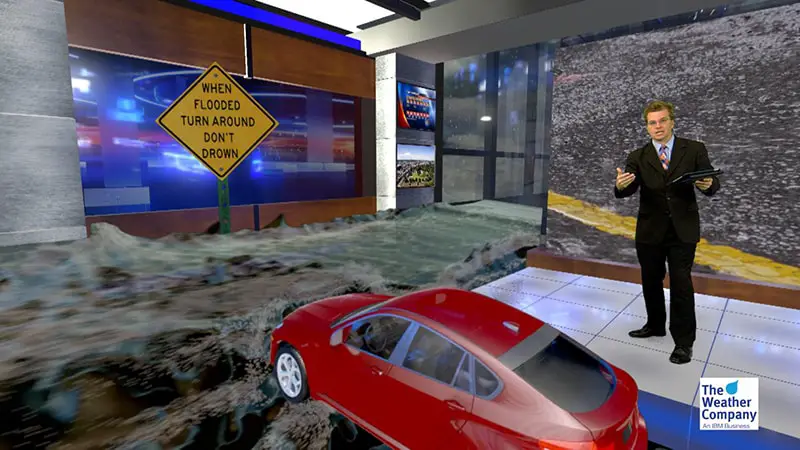
How weather presentations without augmented reality will soon be outdated
As technology advances, it is becoming increasingly clear that weather presentations that don’t incorporate augmented reality will soon stand out for their lack of innovation and creativity.
The Weather Channel, for instance, has been utilising mixed reality to depict weather disasters in a more immersive and interactive way, engaging their viewers for longer. The power of augmented reality technology in the weather forecasting industry is undeniable.
The real-time and spatial simulation of weather, wearable AR systems, and mobile platforms for visualising weather conditions transform how TV networks present their weather forecasts. With benefits such as increased interactivity and descriptive capabilities, it’s clear that augmented reality is the future of weather presentations.
It’s only a matter of time before audiences expect a more engaging and immersive experience from their weather reports.
Developing the ARWeather simulation for a real-time and spatial simulation of weather
Developing ARWeather, the simulation application that can simulate rain, snow, and hail, was crucial in revolutionising weather forecasting. With ARWeather, real-time and spatial weather simulations can be produced, providing an innovative and interactive way of presenting weather information.
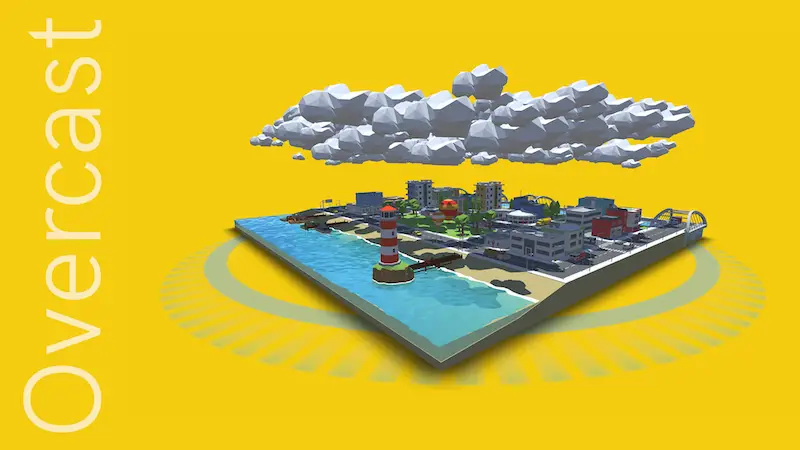
The application’s development is a testament to the power of augmented reality technology in enhancing communication and engagement, particularly in classroom settings. As ARWeather grows, weather presentations without AR technology will soon become outdated.
The ability to analyse actual occurrences of weather types for mobile AR systems, integrate wearable technology like the Tinsmith system, and visualise weather conditions on rough terrain through multilayer infrastructure and mobile AR platforms, provides a much-needed boost to weather forecasting.
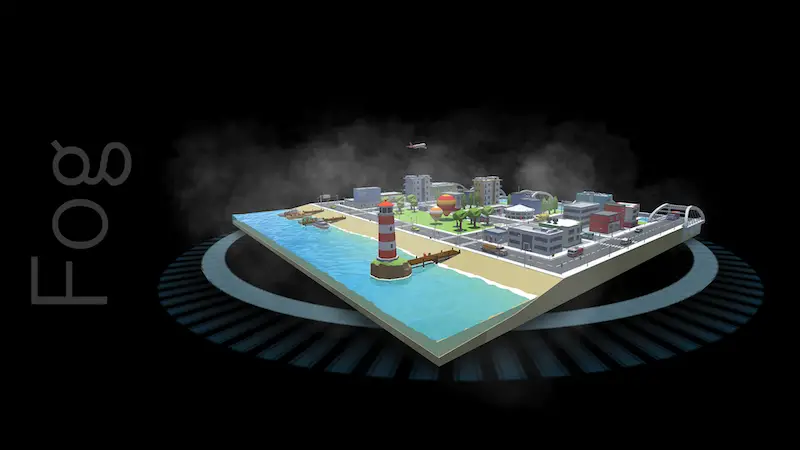
With interactive and descriptive AR weather presentations becoming the norm, it’s no surprise that photo-realistic real-time 3D virtual studios and AR solutions are transforming TV networks’ weather forecasts.
Exploring climAR, an easy-to-use AR weather app for current location weather information
Exploring climAR, an easy-to-use AR weather app is a excellent way to stay up-to-date on the latest weather information around your current location. With its simple and user-friendly interface, climAR provides a wealth of information about weather conditions, from temperature and humidity to wind speed and direction.
This app offers an interactive experience, seamlessly combining the real world with computer-generated content for a unique weather visualisation. It’s an excellent tool for anyone who wants to stay informed and prepared for whatever Mother Nature brings their way.
In the world of weather presentations, apps like climAR are quickly becoming the standard, showcasing the benefits of interactive and descriptive AR weather presentations in engaging users and providing valuable and informative data to users.
Analysis of natural occurrences of weather types for mobile AR systems
To enhance the interactivity and usefulness of weather presentations, developers are exploring augmented reality (AR) technology. Through the analysis of real occurrences of weather types, mobile AR systems can simulate dynamic images of storms and atmospheric events.
The ARWeather simulation, for instance, can now simulate three types of precipitation – rain, snow, and hail – for real-time and spatial visualisations of weather. ClimAR, an easy-to-use AR weather app, also provides users with current location weather information.
The Tinmith system, a wearable device, allows for AR weather presentations on the go. With image recognition technologies and multilayer infrastructure, mobile AR platforms such as these provide interactive and descriptive weather presentations far superior to traditional methods.
Photo-realistic real-time 3D virtual studios and AR solutions are now transforming TV networks’ weather forecasts to give viewers captivating and engaging weather updates.
The wearable Tinmith system for AR weather presentations
The Tinmith system is a wearable augmented reality (AR) solution developed for weather forecasting presentations. This system was created in 1998 and has been continuously improved ever since.
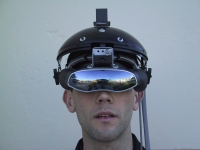
It is a portable and user-friendly device that allows weather presenters to interact with the AR images through voice or gesture commands.
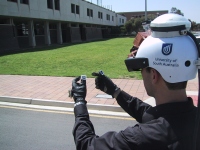
The Tinmith system enables the presenter to present complex information like wind direction, cloud formation, and rainfall in an understandable and visually engaging way.
Combining this technology with Max Reality allows broadcasters and meteorologists to create live 3D simulations of atmospheric conditions that the audience can easily understand.
The Tinmith system provides an innovative and futuristic approach to presenting weather forecasts, ensuring that those equipped with AR technology will be at the forefront of weather broadcasting.
Multilayer infrastructure and mobile AR platform for visualizing weather conditions and rough terrain
The advancements in augmented reality technology have allowed for the development of a multilayer infrastructure and mobile AR platform to visualise weather conditions and rough terrain.
This innovative platform provides a fully immersive experience for users, allowing them to interact with the environment as if it were real. This platform offers a unique way to showcase weather data, from real-time weather simulations to spatial terrain simulations.
The platform uses location and attitude sensors on mobile devices to ensure it withstands all possible weather conditions, including wind, rain, frost, and heat.
The benefits of this interactive and descriptive AR platform go beyond just weather forecasting, as it has tremendous potential in various fields like intelligent pavement management, urban infrastructure, and more.
The integration of AR technology in weather forecasting has revolutionized how we perceive and interact with weather data, and it’s only improving.
The benefits of interactive and descriptive AR weather presentations
Interactive and descriptive augmented reality (AR) weather presentations offer numerous benefits that enhance the viewer experience.

The engaging nature of AR technology boosts viewer retention and memory recall of weather information, ensuring viewers are better equipped to prepare for upcoming weather events.
The ARWeather simulation and climAR app offer real-time and location-based information, allowing users to stay informed about weather conditions in their area. The wearable Tinmith system and mobile AR platforms enable weather presentations to be brought to any location, providing versatility and accessibility.
Meanwhile, TV networks benefit from photo-realistic 3D virtual studios and AR solutions to deliver visually compelling weather forecasts.
As technology continues to advance, non-AR weather presentations will soon become outdated. AR technology in weather forecasting is necessary for providing accurate information to the public.
Photo-realistic real-time 3D virtual studios and AR solutions are transforming TV networks’ weather forecasts
Thanks to the innovative technology of photo-realistic real-time 3D virtual studios and AR solutions, TV networks are transforming how they present their weather forecasts.
By incorporating these advanced graphics and effects, broadcasters can create engaging and interactive presentations that keep viewers tuned for extended periods.
This technology allows them to blend virtual elements seamlessly with real-world footage, resulting in highly realistic and immersive experiences for viewers.
With ARWeather simulations, networks can provide stunning real-time and spatial representations of weather events independent of physical conditions.
Such developments are rapidly making traditional, flat weather presentations outdated as the industry embraces the advantages of interactive and descriptive AR weather displays.
